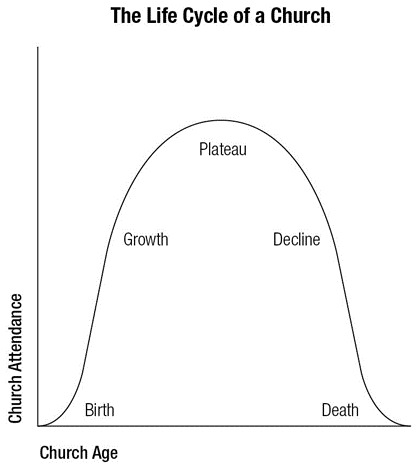strategic planning for church leadership

1. Introduction
Dr. Aubrey Malphurs
I spotted the creature sitting off in the distance almost by itself. With long arms that looked like a tangle of dark blue steel tentacles, it reminded me of a large octopus that had crawled out of the ocean nearby. It was nothing of the sort. It was one of several rides operated by a small, traveling carnival that happened to pass through our town close to where my family and I lived. I was alone with my daughter, Jennifer, who at the time was around the impressionable age of four or five. I decided to live a little and have a good time that would make a lasting impression on my little girl. She would discover that Dad wasn’t afraid to try something new.
We boarded the monster, and soon it was spinning around at breakneck speed while the tentacles frantically lashed up and down. It was frightening. I began to worry that one of the tentacles—the one that held us—could possibly tear loose with all the contortions it was going through. We would not survive if it did. I silently prayed and made a vow to God as I held Jennifer tightly against my chest. It went something like this: God, if you get us off this ride alive and in one piece, I promise never to get on another ride for the rest of my life! God answered my prayer, the octopus let go, and I have kept that vow.
More than at any other time in history, North America, along with much of the world, is exploding with change—fast, frightening change. I refer to it as megachange. It has affected every institution—business, government, the schools, and the church—and it is occurring at a number of levels: national, corporate, and individual. The result is a revolution taking place all around us that is likely to be as profound as any in the past. Some wrongly advise us just to be patient, that in time it will all pass. The reality is, however, that there is no end in sight. We have climbed on board the octopus only to discover that it will not let go.
What is the explanation for this megachange? What is happening? Peter Drucker sums it up best:
Every few hundred years throughout Western history, a sharp transformation has occurred. In a matter of decades, society altogether rearranges itself—its world view, its basic values, its social and political structures, its arts, its key institutions. Fifty years later a new world exists. And the people born into that world cannot even imagine the world in which grandparents lived and into which their own parents were born.[1]
Drucker’s point is that we are living at one of those rare points in time when an old worldview (modernism) and many of its trappings are dying and another (postmodernism) has been born. The consequence is a massive shift in our culture, science, society, and institutions. This change is enormously greater than the world has ever experienced, and we are caught in the middle of it. We are living at a frightening point of absolute, chaotic discontinuity, watching the old die off and the new rush in to fill the vacuum.
Where is the church in all this? How is it doing?
3. The Explanation
Dr. Aubrey Malphurs
The Explanation
The information above indicates that the North American church is not on a plateau but in decline. It is facing a major growth challenge. It is over the life-cycle hump and moving downward. Before venturing to offer a solution to the problem, I want to look at an explanation for the problem. I believe an understanding of the reason the problem exists is a major step toward solving it. As someone once said, a problem well defined is a problem half solved.
Experts have put forth numerous explanations for why the North American church is struggling. Many lay blame. Based on the information above, you could blame the church for not doing a better job of evangelism and edification. If 65 percent of the people in the churches are either plateaued or declining in their spiritual growth, it is no wonder that so many churches are struggling.
You might also blame the seminaries and colleges that train the church’s leaders. A scan of the typical seminary curriculum would reveal that far too many are not aware of what is taking place in North American culture and its impact on the typical church. Though many seminaries and Christian colleges have begun to use the new technology, they are typically business as usual when it comes to the curriculum.
My view is that the problem is not what evangelical seminaries teach but what they do not teach. Many evangelical seminaries teach the Bible and theology, and it is imperative that they do so. However, they often do not provide strong training in leadership, people skills, and strategic thinking skills, and this is poor preparation for ministry in today’s shrinking world, which is undergoing intense, convoluted change.

2. The Problem
Dr. Aubrey Malphurs
The answer is, not well. In an earlier book, I noted that in 1988 between 80 and 85 percent of churches in North America had either plateaued or were in decline (dying). Now in the twenty-first century, that figure has not changed appreciably despite a valiant surge in church planting. The number of unchurched people across America continues to be high, possibly as high as 70 to 80 percent. Penny Marler comments that if the Gallup surveys over the past thirty years that estimate the unchurched to be only 57 percent of the population were accurate, then people would be flocking to our churches. But this is not happening.
Based on my research and consulting ministry with churches, I am convinced that the typical church does not understand the full implications of megachange. Even when a church has some understanding of the implications, it doesn’t know how to respond in effective ministry to those becoming immersed in the postmodern paradigm. I believe that the majority of seminaries that prepare people for ministry sit in the same boat with the churches. They are still preparing future pastors for ministry to a modern—not a postmodern—world. Most training equips pastors for one hour on Sunday morning but ignores the other forty-plus hours of the week that demand such things as leadership gifts and abilities, people skills, and strategic thinking and doing. My research, pastoral experience, and church consulting indicate that pastoring a church is a leadership-intensive enterprise. It is imperative that a pastor be able not only to preach to a congregation but also to lead and relate well to that congregation.
4. The Solution
Dr. Aubrey Malphurs
The concept of the sigmoid curve raises a critical question for the North American church. Is there anything a church can do to circumvent or at least put off eventual decline and death? The answer is yes, and it is twofold. First, gifted leaders of churches and denominations must start new S-curves. They need to launch out in new directions. Second, they need a strategic planning process that helps them start new sigmoid curves. They need to know how to think and act in the twenty-first century.
Starting New S-Curves
The answer to the problem of church decline is to start new S-curves. This should occur in several contexts: church planting, church growth, and church revitalization. You would be wise to pay close attention to the context that describes your ministry situation.
Strategic Planning
The answer to the problem of church decline is to start new S-curves. This necessitates a strategic planning process along with leaders or navigators who can effectively lead their churches through the process. It is imperative that strategic planning be at the heart of starting new S-curves. The following provides an overview or a synthesis of the strategic planning process, which is developed in this book. It will help you see where each part fits and how all the parts work together to accomplish congregational development. You may find it helpful to consult the table of contents as you read the following. The strategic envisioning process or navigational compass is made up of three distinct parts, each of which has several elements that work to envision the church’s future.
Strategic Leadership
The key to strategic planning is competent strategic leadership. You may develop the finest strategic plan in the history of the church. It may be featured in the major journals on leadership. You might publish it in a book that sells thousands of copies. However, it will not happen without competent, gifted leadership. In a way, this is a disclaimer. I have designed this book to help you develop a plan that “touches all the bases” and makes a significant difference in your church. However, it will not likely come to fruition without good leadership, especially at the senior pastor level.
Regardless of how new S-curves in a church are started—through church planting, growth, or revitalization—two interrelated pieces must always be present. One is a congregation that is ready to grow or be revitalized. The other is a competent pastor who is able to lead the ministry through change. So who are these pastors and what does this kind of leadership look like? What are the characteristics of pastor-leaders who can lead their churches to grow or be revitalized? Because of the critical nature of these questions and the importance of leadership to the entire process, I will address them at the beginning of chapter 1, “Preparing the Navigator.”

